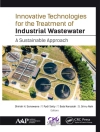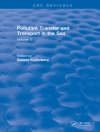Nutrient Cycling in Terrestrial Ecosystems presents a comprehensive overview of nutrient cycling processes and their importance for plant growth and ecosystem sustainability. The first part of the book presents the fundamentals of nutrient cycling. Topics included are cycling of carbon, nitrogen, phosphorus, sulphur and micronutrients. Particular attention is paid to the role of root exudates and rhizosphere microorganisms in facilitating nutrient cycling. The second part discusses nutrient cycling at an ecosystem scale, covering cropping systems, pastures, natural grasslands, arid lands, tundras and forests. The final chapter reviews current models of nutrient cycling.
By comprehensively covering nutrient cycling at a range of scales and emphasising multidisciplinary approaches, this volume will support scientists and practitioners alike, providing links between those involved in improving sustainable economic output from managed ecosystems and those interested in conservation of natural ecosystems.
Tabla de materias
Principles of Nutrient Cycling.- Composition and Cycling of Organic Carbon in Soil.- The Nitrogen Cycle in Terrestrial Ecosystems.- Phosphorus and Sulphur Cycling in Terrestrial Ecosystems.- Cycling of Micronutrients in Terrestrial Ecosystems.- Root Exudates and Nutrient Cycling.- Plant-Microbe Interactions in the Rhizosphere and Nutrient Cycling.- Nutrient Cycling Budgets in Terrestrial Ecosystems.- The Role of Crop Residues in Improving Soil Fertility.- Nutrient Cycling Budgets in Managed Pastures.- Natural Grasslands — a Case Study in Greece.- Dryland Ecosystems.- Nutrient Cycling in the Tundra.- Nutrient Cycling in Forests and Heathlands: an Ecosystem Perspective from the Water-Limited South.- Modelling Nitrogen and Phosphorus Cycling in Agricultural Systems at Field and Regional Scales.












